Inspections Track Software For Oil and Gas Inspection Industry
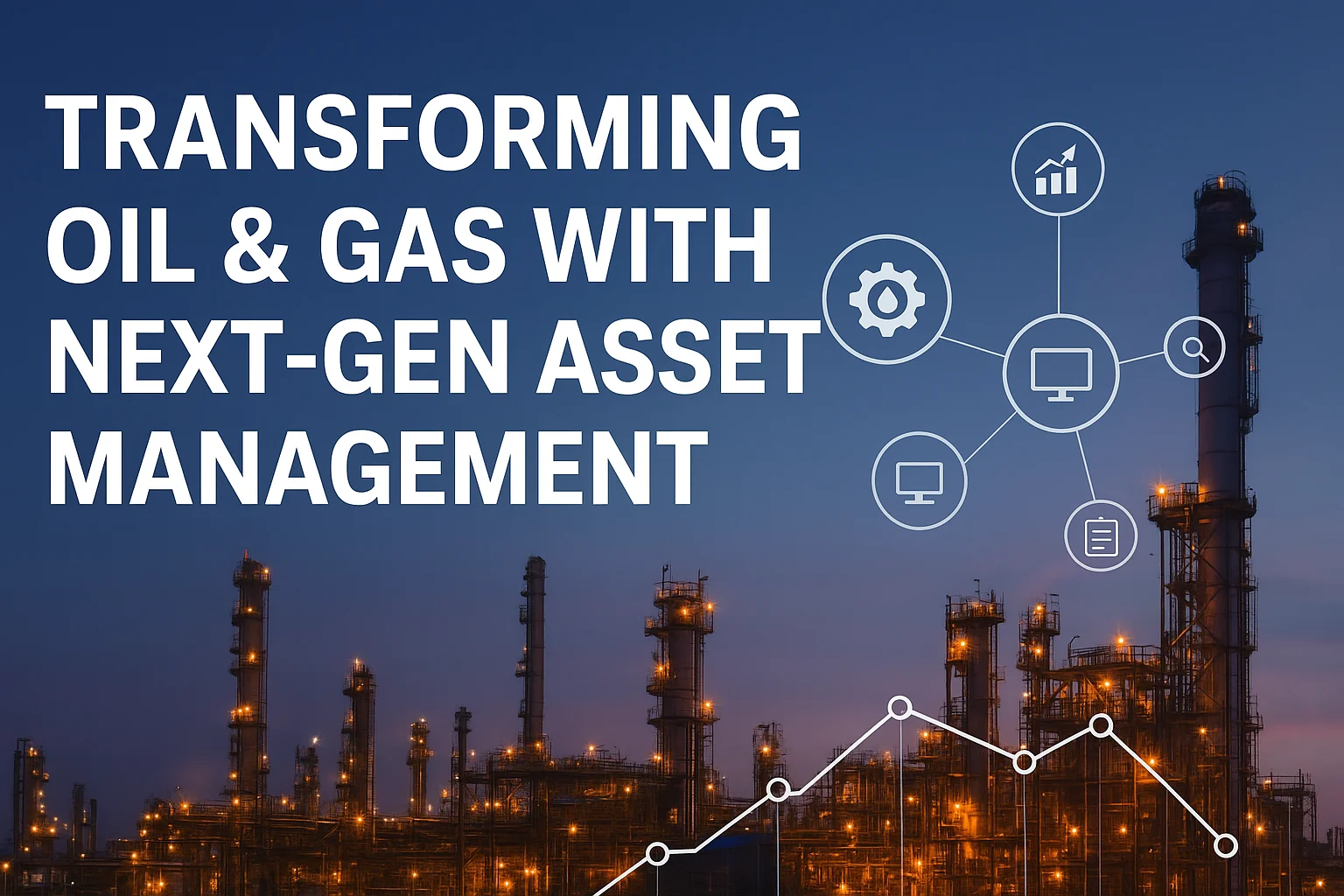
The oil and gas industry is entering a new era—one driven by innovation, data, and technology. For decades, companies have relied on traditional practices to manage critical assets like pipelines, drilling equipment, and refineries. However, as the energy landscape evolves, so too must the strategies for managing these valuable assets.
Next-generation asset management is reshaping how oil and gas companies approach maintenance, safety, and operational efficiency. Powered by advanced technologies such as IoT (Internet of Things), AI (Artificial Intelligence), digital twins, and predictive analytics, the industry is transitioning from reactive problem-solving to proactive optimization.
Furthermore, the adoption of inspection tracking software has revolutionized field inspections, enabling real-time reporting, better compliance, and reduced downtime. By digitalizing the inspection process, companies can track, monitor, and predict asset performance across multiple sites with unprecedented accuracy.
In this article, we’ll explore how next-gen asset management is transforming the oil and gas industry, the technologies driving this change, and how businesses can leverage these tools to future-proof their operations.
Asset management in the oil and gas sector involves overseeing, maintaining, and optimizing all physical assets across the entire value chain—from upstream exploration to downstream refining and distribution. This includes drilling rigs, pipelines, storage facilities, and production equipment—all of which are essential for uninterrupted energy supply.
Traditionally, asset management relied heavily on manual processes, spreadsheets, and periodic inspections. While these methods served their purpose for decades, they are increasingly inadequate in today’s high-stakes environment. Aging infrastructure, volatile market conditions, and strict environmental regulations demand a more agile, data-driven approach.
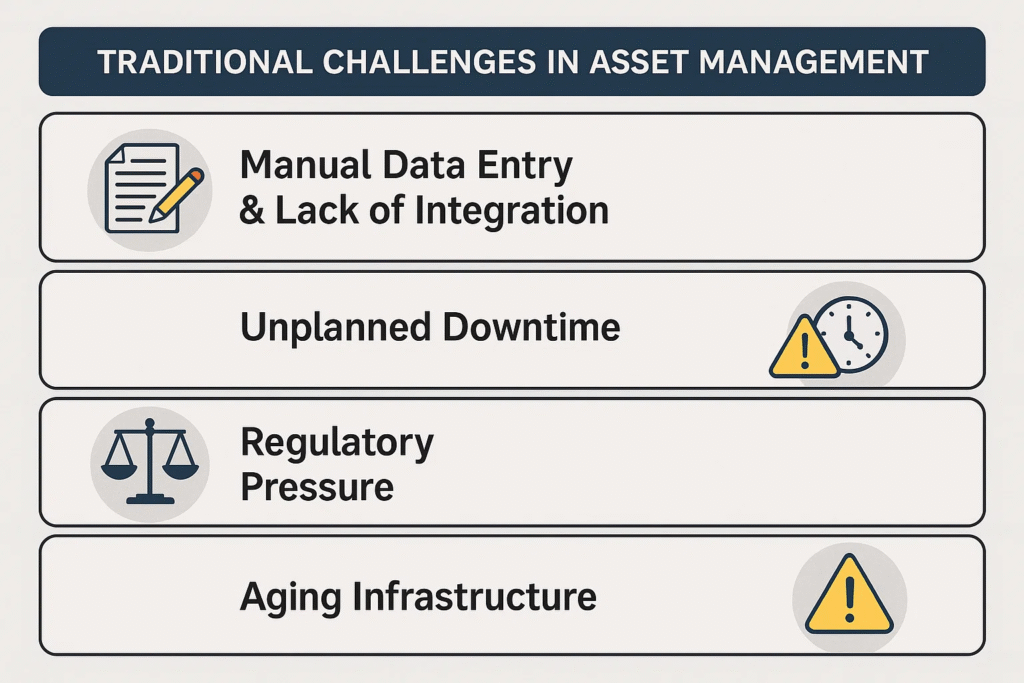
To overcome these challenges, companies are turning toward next-gen asset management systems that integrate data, automate workflows, and enable predictive insights. These advanced systems make it possible to track the health of every asset in real time, prioritize maintenance tasks, and ensure compliance across multiple sites globally.
Technology has become the heartbeat of modern oil and gas operations. From remote monitoring to digital inspections, data-driven decision-making is transforming how organizations manage and maintain their assets.
Digital transformation is not merely a trend—it’s a strategic necessity. Companies that embrace digital asset management platforms gain a competitive advantage by enhancing efficiency, safety, and profitability. These platforms integrate multiple data sources—sensors, IoT devices, ERP systems, and inspection tools—into a single unified dashboard.
With access to this consolidated data, decision-makers can identify risks early, optimize maintenance schedules, and even forecast equipment performance. This leads to reduced operational costs, lower downtime, and improved asset reliability.
Together, these technologies enable a shift from reactive to proactive management—helping oil and gas companies not only maintain but maximize the performance of every asset throughout its lifecycle.
The term “next-gen asset management” refers to the integration of cutting-edge technologies and intelligent data systems to create a fully connected, self-optimizing network of assets.
Unlike traditional methods, which depend on human intervention and periodic inspections, next-gen systems continuously collect and analyze data to predict failures, optimize operations, and enhance safety.
For example, inspection tracking software is an essential part of next-gen asset management. It automates inspection planning, task assignments, and reporting—ensuring that every asset meets compliance standards. When integrated with IoT sensors, it can instantly flag anomalies, trigger alerts, and recommend corrective actions.
The result? Fewer failures, lower maintenance costs, and safer operations—making next-gen asset management a critical investment for any modern oil and gas company.
The oil and gas industry is facing unprecedented challenges: global competition, decarbonization pressures, and rising operational costs. Traditional management systems can no longer keep up. The need for real-time visibility, operational efficiency, and sustainability is driving the rapid adoption of next-gen asset management tools.
Oil and gas operators cannot afford to delay this transition. The integration of inspection tracking software and digital asset platforms ensures that companies stay ahead of regulatory changes while protecting both assets and personnel.
The future belongs to companies that embrace data, automation, and intelligence—those that see asset management not just as maintenance but as a strategic advantage.
In an industry where safety and precision are paramount, inspection tracking software is a game-changer. It’s revolutionizing how companies manage their inspection schedules, track compliance, and ensure operational safety across all sites.
Inspection tracking software automates the process of scheduling, conducting, and documenting inspections. It helps oil and gas companies track every inspection event—whether for pipelines, drilling rigs, or refinery equipment—in real time.
Gone are the days of manual data entry and paper-based reports. Today’s cloud-based inspection software integrates with IoT sensors, drones, and mobile apps, allowing field inspectors to record findings instantly from any location.

By digitizing inspection processes, companies can reduce inspection time by up to 40% and improve accuracy significantly. Additionally, managers can monitor inspection progress across multiple sites from a single dashboard.
The software also ensures that critical data is stored securely in the cloud, allowing for easy retrieval during audits. This makes compliance with regulatory bodies like OSHA, EPA, and ISO far more straightforward and less time-consuming.
In essence, inspection tracking software not only enhances efficiency but also strengthens the foundation of asset integrity and safety—key pillars in oil and gas operations.
Among the most transformative technologies in modern asset management is the Digital Twin—a virtual replica of physical assets, systems, or processes that enables real-time simulation, monitoring, and analysis.
A digital twin acts as a bridge between the physical and digital worlds. Using data collected from sensors, drones, and IoT devices, it creates a dynamic digital model that mirrors the condition and behavior of real assets.
For example, an offshore drilling rig’s digital twin can display live data on equipment performance, temperature, vibration, and pressure. This allows operators to predict failures before they occur and make data-driven maintenance decisions.

By combining digital twins with AI and inspection tracking software, oil and gas companies can monitor thousands of assets remotely. This fusion of technologies allows for a fully connected ecosystem where insights are continuously updated and actions are automated.
In the long run, this not only reduces operational costs but also boosts asset longevity, making digital twins an essential part of next-gen asset management strategies.
The cost of equipment failure in the oil and gas industry can be astronomical. A single unplanned shutdown can result in millions of dollars in lost production. That’s why predictive maintenance (PdM) has become one of the most valuable tools in the modern asset management arsenal.
Predictive maintenance leverages IoT sensors, AI algorithms, and data analytics to continuously monitor asset health. By analyzing real-time data—such as vibration patterns, temperature fluctuations, and pressure readings—the system can detect anomalies early and predict potential failures before they disrupt operations.
For instance, a pump showing increased vibration levels might indicate bearing wear. Predictive analytics can flag this issue before it leads to a costly breakdown, allowing for targeted maintenance rather than unnecessary full-scale overhauls.
When integrated with inspection tracking software, predictive maintenance becomes even more powerful. Every inspection event contributes valuable data to the system, enhancing its predictive capabilities over time.
This approach transforms maintenance from being a cost center into a strategic advantage, ensuring smoother operations, lower risks, and higher profitability.
The Internet of Things (IoT) is the backbone of next-gen asset management. It connects physical assets—like drilling rigs, compressors, and pipelines—to digital systems that collect, analyze, and transmit data in real time.
IoT sensors embedded in equipment continuously capture operational parameters such as temperature, vibration, and pressure. This data is transmitted to centralized dashboards, allowing operators to monitor performance remotely and take preventive action when anomalies occur.
For example, an IoT-enabled valve can alert engineers to pressure irregularities, enabling immediate intervention and preventing potential leaks or blowouts.
In addition, IoT technology integrates seamlessly with inspection tracking software, allowing inspection results and live sensor data to be analyzed together. This unified approach creates a holistic view of asset health, ensuring timely interventions and informed decision-making.
The result is a smart, connected ecosystem—one where machines communicate, predict, and optimize continuously, pushing the oil and gas industry toward a safer and more sustainable future.
Artificial Intelligence (AI) has become the brain of next-generation asset management systems. It empowers oil and gas companies to make smarter, faster, and more accurate decisions based on real-time data analytics.
AI algorithms process vast volumes of data generated from IoT sensors, inspection records, and operational logs. By identifying patterns and anomalies, AI systems can predict failures, recommend maintenance actions, and optimize production processes.
For example, AI can analyze vibration data from compressors to determine when they’re likely to fail or when performance begins to decline. It can even suggest optimal maintenance times to minimize disruption.
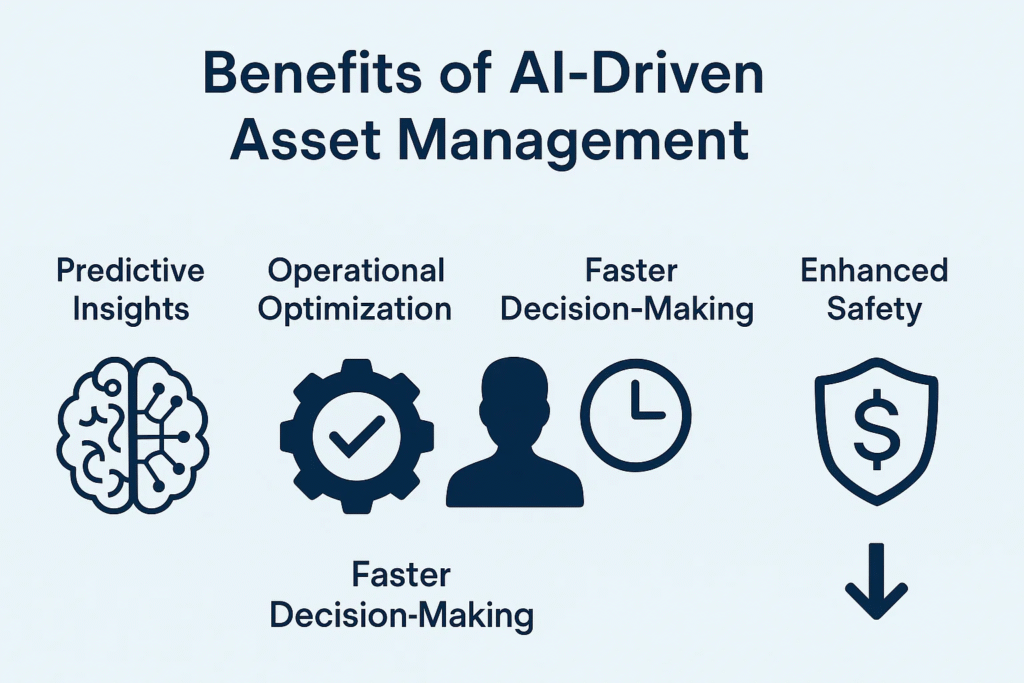
When combined with inspection tracking software, AI can automatically categorize inspection data, flag non-compliance, and recommend corrective actions. This leads to faster resolution times and improved asset reliability.
Read more : the future of ai in inspections with smarter solutions
In the evolving oil and gas landscape, AI is not just a tool—it’s a strategic partner, driving the transition from reactive management to intelligent, self-learning operations.
In the oil and gas sector, safety and compliance are non-negotiable. Every day, companies operate under strict regulations designed to protect workers, the environment, and critical assets. However, manual safety checks and compliance reporting can be time-consuming and error-prone. That’s where automation plays a vital role in transforming asset management.
Automated systems continuously collect and analyze data from sensors and inspection tools. For example, if a sensor detects a pressure anomaly in a pipeline, the system can automatically trigger alerts, shut down equipment, or notify maintenance crews. This instant response capability minimizes risks, preventing small issues from escalating into disasters.
Moreover, automated inspection workflows ensure that safety checks are never skipped or delayed. By integrating with inspection tracking software, organizations can track every inspection, assign tasks, and verify completion in real time.
Regulatory compliance in oil and gas involves documentation, audits, and strict adherence to safety protocols. Automation simplifies this by maintaining digital records of all inspections, maintenance activities, and operational data. These records can be accessed instantly during audits, saving valuable time and ensuring transparency.
By combining automation with AI and IoT, oil and gas companies can create a self-regulating system that not only complies with regulations but also anticipates and mitigates risks proactively.
Data is the new oil—and in today’s industry, it’s just as valuable. The ability to gather, process, and interpret massive amounts of data is redefining how companies manage their assets.
Modern asset management systems collect data from countless sources—inspection reports, IoT sensors, and operational logs. However, without analytics, this data remains untapped potential. Advanced analytics tools and AI algorithms transform raw data into actionable insights, helping leaders make informed decisions.
For instance, data visualization dashboards can show which equipment is underperforming, which sites are due for inspection, and where safety risks are increasing. This level of visibility helps prioritize maintenance schedules and allocate resources efficiently.
When integrated with inspection tracking software, these analytics become even more powerful. For example, inspection data can feed directly into analytics dashboards, allowing teams to monitor compliance trends or failure patterns instantly.
In essence, data-driven decision-making transforms asset management from reactive maintenance to strategic intelligence, enabling oil and gas firms to stay competitive in a rapidly evolving market.
Next-gen asset management is not only about technology—it’s about sustainability and profitability. As global energy markets shift toward cleaner operations, oil and gas companies face mounting pressure to reduce emissions, improve efficiency, and minimize waste.
Implementing advanced asset management solutions leads to tangible financial benefits. Predictive maintenance and automation significantly reduce unplanned downtime, saving millions annually. Digital tools also help optimize resource utilization—ensuring equipment operates at peak performance while reducing unnecessary expenditures.
According to industry reports, companies adopting next-gen asset management see an average 20–25% reduction in maintenance costs and a 30% improvement in equipment uptime.
By leveraging technologies like digital twins, IoT, and inspection tracking software, oil and gas firms can monitor their carbon footprint and ensure compliance with environmental regulations.
This dual advantage—economic and environmental sustainability—positions next-gen asset management as a cornerstone of the industry’s transition toward a greener and smarter future.
Transitioning from traditional to next-generation asset management requires strategic planning, investment, and cultural change. While technology is critical, successful implementation also depends on people, processes, and mindset.
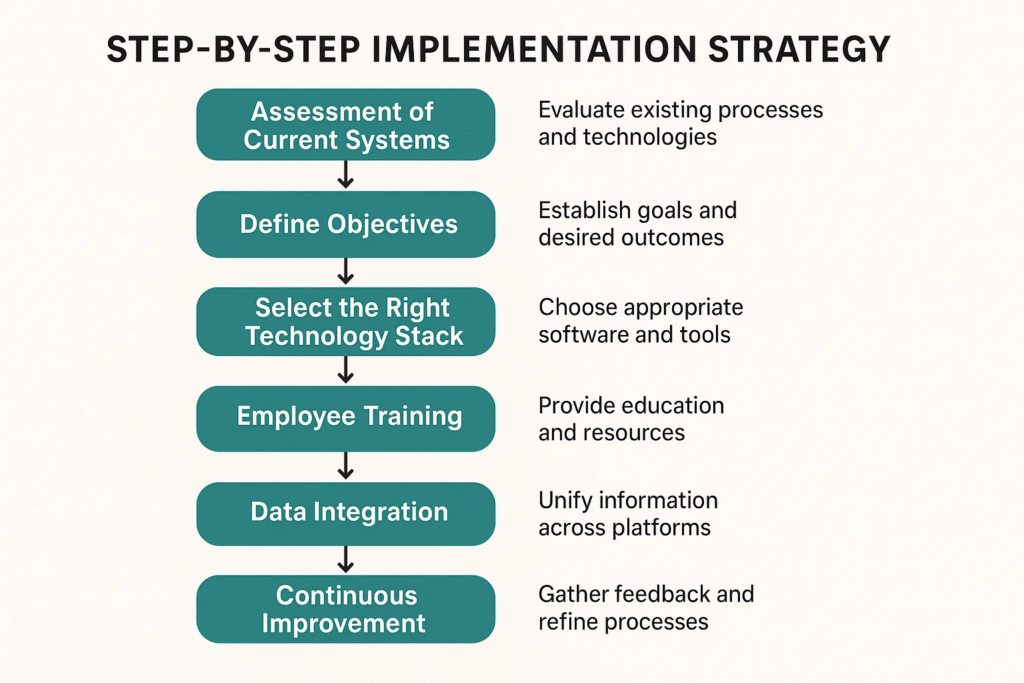
Leading oil and gas companies have successfully implemented asset management systems that integrate inspection tracking, IoT sensors, and AI analytics. The result: fewer failures, optimized maintenance, and higher safety compliance.
By following a structured roadmap and prioritizing data-driven decision-making, businesses can fully harness the power of next-gen asset management to achieve operational excellence.
The future of oil and gas will be defined by intelligent ecosystems—networks of connected assets that think, learn, and adapt in real time. This future is already unfolding, powered by AI, IoT, digital twins, and smart inspection software.
A truly smart ecosystem integrates every aspect of asset management—from inspections and maintenance to analytics and compliance. By using inspection tracking software, companies gain a live overview of asset health, ensuring issues are addressed before they escalate.
This level of integration ensures that operations are not only efficient but also sustainable, transparent, and future-ready. As automation and intelligence continue to evolve, oil and gas companies will find themselves at the forefront of the next industrial revolution—Industry 5.0.
The oil and gas industry stands on the brink of a digital revolution. Through next-gen asset management, companies can achieve unparalleled levels of efficiency, safety, and sustainability. Technologies such as AI, IoT, digital twins, and inspection tracking software are no longer optional—they are essential for survival in a data-driven era.
By adopting these innovative solutions, oil and gas companies can reduce operational costs, enhance safety, ensure regulatory compliance, and align with global sustainability goals. The transformation is clear: those who embrace digital asset management today will lead the energy landscape of tomorrow.
Readmore : historical inspection data and automated reporting
Next-gen asset management integrates advanced technologies like AI, IoT, and predictive analytics to optimize operations, improve safety, and reduce costs across oil and gas assets.
It automates inspection scheduling, data collection, and reporting—ensuring compliance, reducing downtime, and enhancing visibility across all assets.
Digital twins offer real-time monitoring, predictive maintenance, and data visualization, allowing operators to simulate and optimize asset performance.
It helps identify potential failures early, minimizing costly downtime and ensuring equipment longevity.
By assessing current processes, defining goals, choosing integrated technologies, training employees, and implementing scalable pilot projects.

Introduction: Why the Inspection Mindset Matters In modern oil and gas operations, safety cannot rely solely on checklists. While checklists ensure compliance, they rarely capture the deeper insights needed to prevent failures. Therefore, the real…
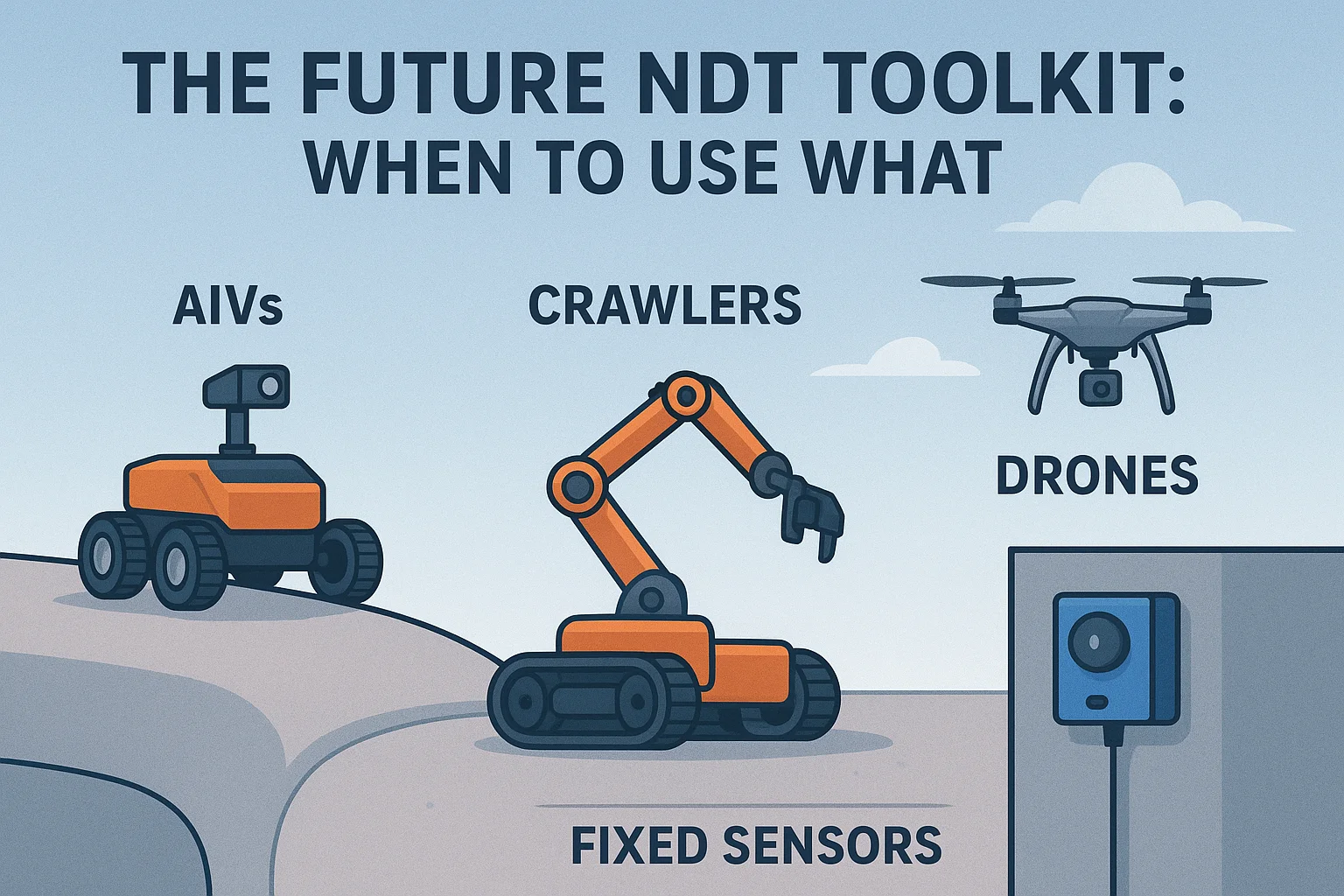
Introduction: The Evolving Landscape of NDT Non-Destructive Testing (NDT) has entered a new era one defined by automation, robotics, and real-time data intelligence. Traditional manual surveys still matter, yet modern inspection teams now rely on…
SkySoft Connections provides quality IT services around the globe. Our services begin with experience and end with dedication, ensuring innovation and reliability
© Copyrights, 2024 All Rights Reserved Skysoftconnections
Contact us
Get notified about new articles
Comment (1)
Real-Time Inspections Support in the Oil and Gas Industry - inspectiontrack
Oct 16, 2025[…] Read more : next gen asset management in oil gas […]
Comments are closed.